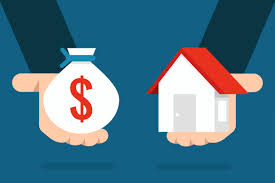What is money? (#2): The evolution of Property Rights
In my last blog, we defined “value”, an important concept in our quest to define money.
The next building block is the concept: “property rights”.

Property rights, in a manner of speaking, separates us from animals who fight for something of value but in limited supply.
By turning to nature once again, we find that everything in life is a transaction, or an exchange.
In mammals, life sustaining blood circulates throughout the body carrying blood cells and nutrients to all the organs. Blood cells deliver carbon dioxide (CO2) to the lungs in exchange for oxygen (O2), which we cannot live without.
The CO2 breathed out is a waste product for animals, but it’s a molecule of tremendous value for plants. This swap of molecules is a fair exchange of value between the Animal and Plant Kingdoms.
In a society, the economy is like the life blood moving products from one place to another. Money, when circulating is referred to as currency, and like a blood cell, it’s used as a medium of exchange, trading one product of value for another.
Remember, a medium of exchange implies “value” and an acceptance of “property rights”; it implies “this” is mine, and “that” is yours, and now we are going to trade one for the other.
Without acknowledgement of property rights, there would be no need for money.
So, to understand money, we must understand the concept of property rights.
But how did we come to acknowledge property rights?
Hundreds of thousands of years ago, when our ancestors were still hanging from trees, they lived day to day immediately consuming whatever food they could get their hands on.
In his book about the birth of the 3 great religions, The Source, Leon Uris described what it must have been like once our ancestors moved into caves with the division of labor: men the hunters and women taking care of other duties near the cave such as child rearing and sowing clothes, etc.
Uris goes on to describe how thousands of years passed, and at some point, a cavewoman had her “eureka” moment after many years observing that seeds from some edible plants were blown away by the wind to another location. Months later, those plants appeared in another location.
She tried for years to duplicate the process, collecting seeds and throwing them to other locations. Decades of failure taught her that throwing them on rocky, dry, or barren ground would prove useless.
More years passed, and by pure chance, she learned that throwing them near a stream where the sun would shine proved fruitful, but under the scorching heat of too much sun or under too much shade, they would die.
Eventually, she grew the edible plants successfully in a small area, only to have them uprooted by wild boars, or eaten by other members of the tribe, forcing her to start over after so many years of hard work.
After much quarrelling, she convinced her husband to build some form of shelter to protect her plot of land. Yes … “her” land.
Sure, the land was a part of nature, in its raw state open to all. But through her blood, sweat, and tears of frustration pursuing a vision, and the use of her mind, she paid for her right to own that small plot of productive land.
She was not about to toil in vain so that some free loafing cave dweller could just swoop in and eat freely from the fruit of her effort.
Though the story is fiction, Leon Uris painted a picture how “property rights” may have come to be acknowledged by humans.
On my next blog, we’ll explore how the concept of value and property rights led to barter, another step in the evolution of money, in our quest to see if cryptos are real money.
Congratulations @chepe! You have completed some achievement on Steemit and have been rewarded with new badge(s) :
Click on any badge to view your own Board of Honor on SteemitBoard.
For more information about SteemitBoard, click here
If you no longer want to receive notifications, reply to this comment with the word
STOP